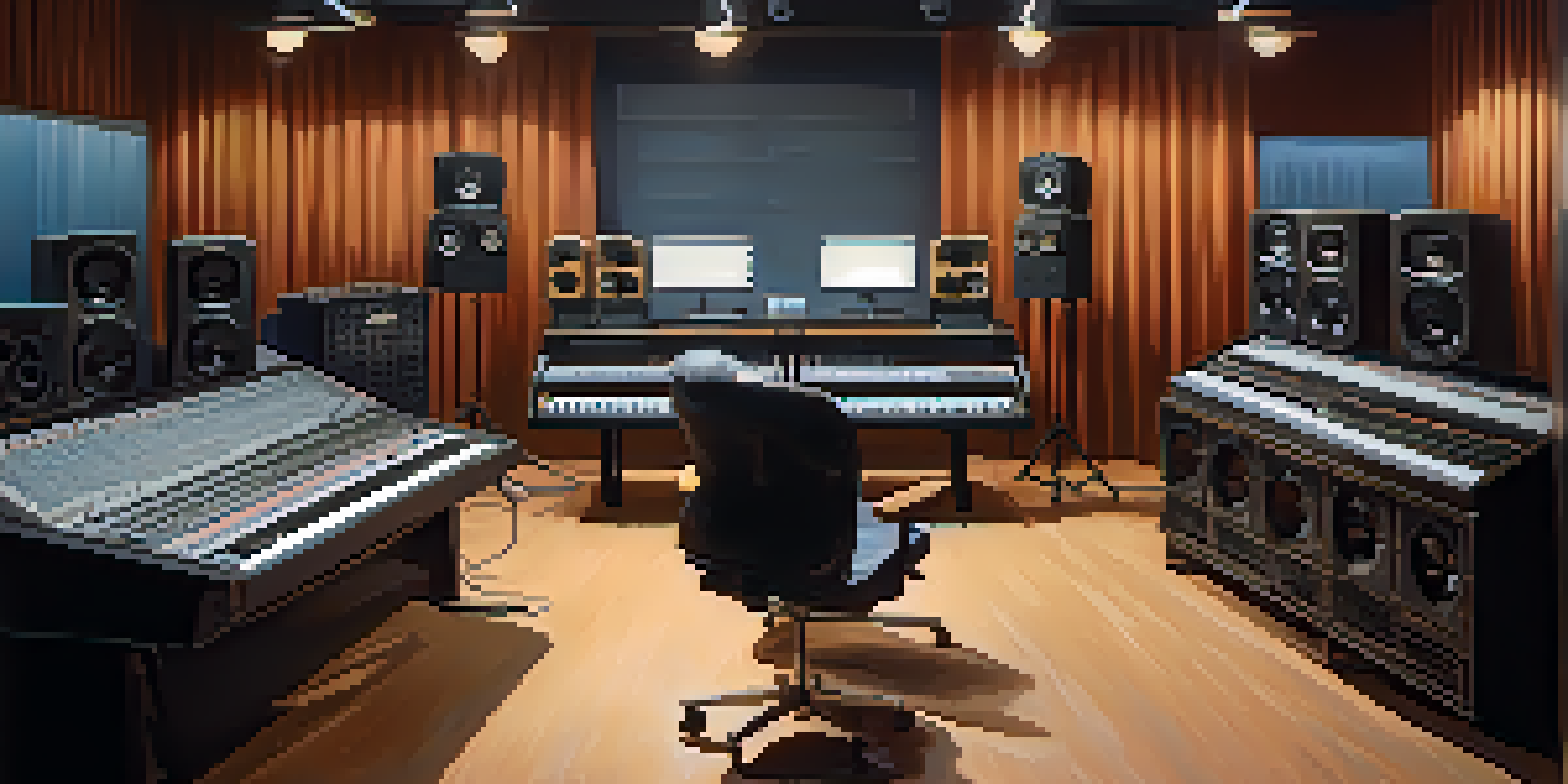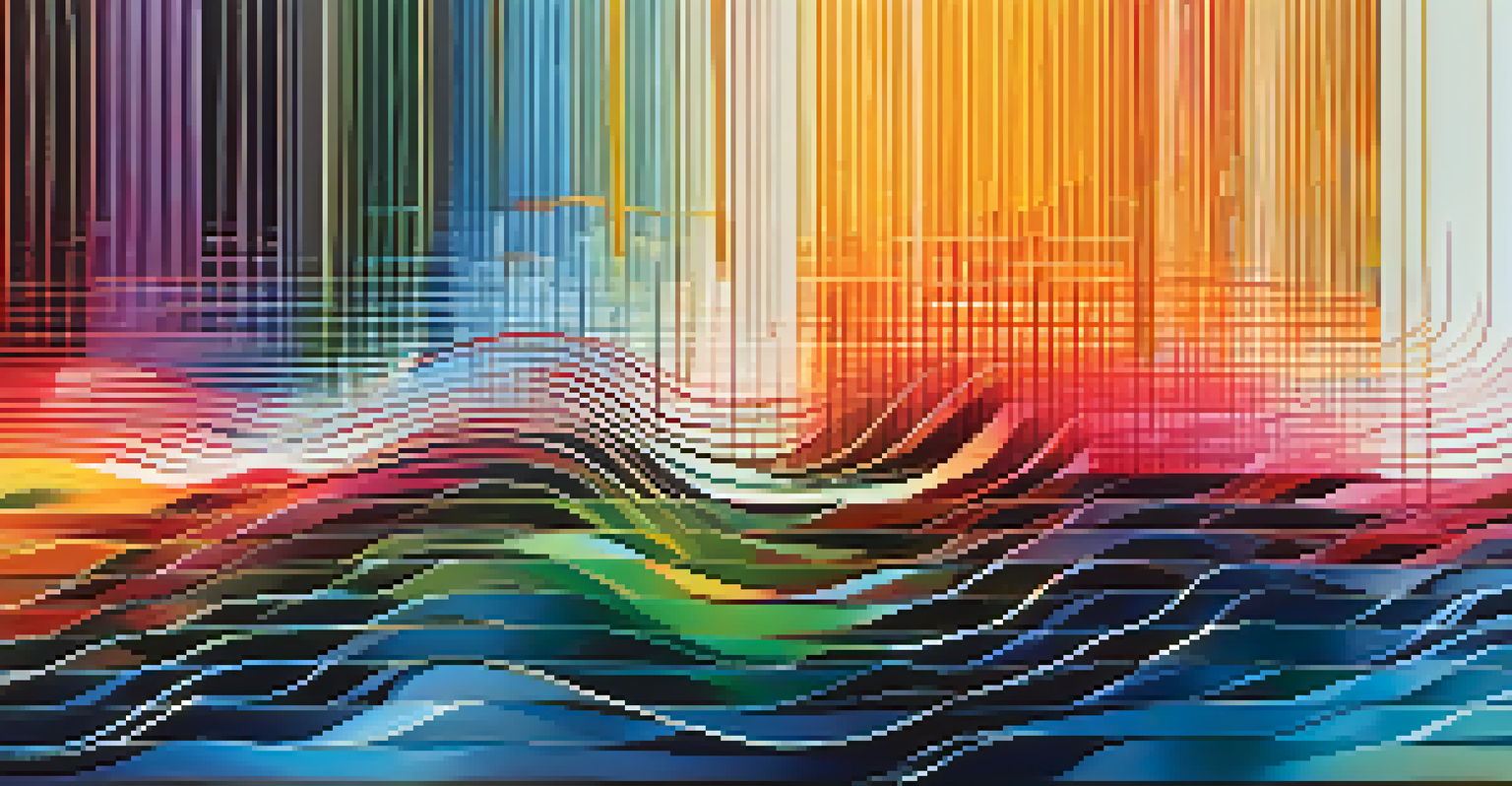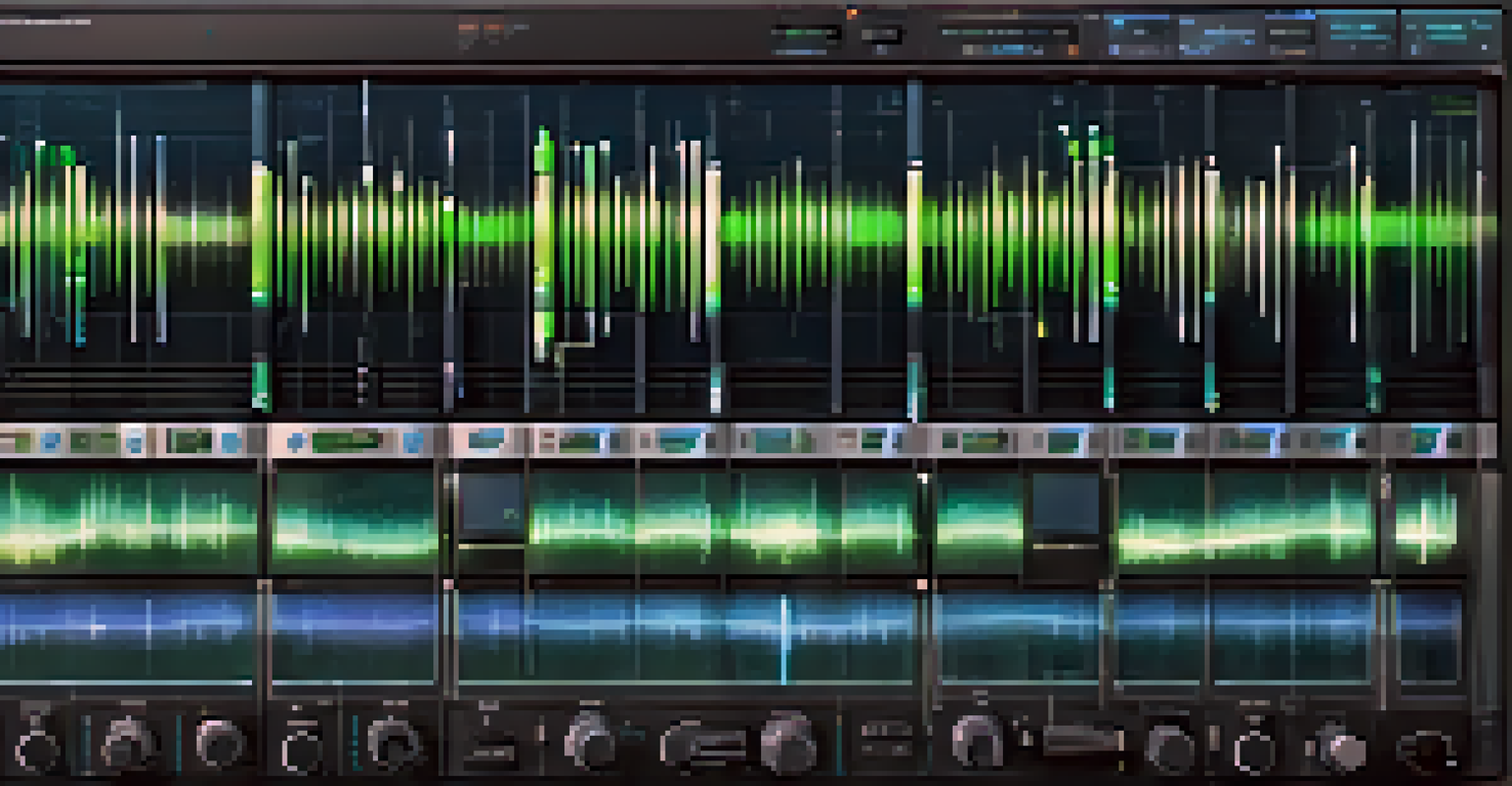Using Audio Effects to Transform Your Sound Design Projects

Understanding Audio Effects and Their Importance
Audio effects are tools that modify sound in creative ways, enhancing your overall sound design. They can add depth, texture, and emotion to your projects, making them more engaging for listeners. Think of them as spices in cooking; just a dash can elevate a dish from bland to extraordinary.
Sound is the vocabulary of nature.
These effects can range from simple adjustments, like reverb and delay, to more complex manipulations like distortion and pitch shifting. Each effect serves a unique purpose, allowing you to shape your sound landscape effectively. By mastering these tools, you're not just creating sounds; you're crafting experiences.
Whether you're working on music, film, or podcasts, understanding audio effects is crucial. They help convey feelings, set moods, and build atmospheres that resonate with your audience. This foundational knowledge will serve as a springboard for your creative endeavors.
Exploring the Different Types of Audio Effects
Audio effects can be categorized into several types, including dynamic, time-based, and modulation effects. Dynamic effects, like compressors and limiters, help control the volume and dynamics of your sound. They ensure that your audio maintains a professional quality, avoiding unwanted peaks or drops.

Time-based effects, such as reverb and delay, create a sense of space and depth. Imagine standing in a grand hall versus a small room; the sound behaves differently in each environment. These effects can transport your listeners to various settings, enhancing the story you're telling through sound.
Audio Effects Enhance Sound Design
Audio effects serve as creative tools that transform basic sounds into engaging auditory experiences.
Modulation effects, including chorus and flanger, add movement and richness to your audio. They can create a lush, full sound that captivates listeners. By mixing different types of effects, you can achieve a unique sonic signature that reflects your style as a sound designer.
How to Choose the Right Effects for Your Project
Selecting the right audio effects for your project can feel overwhelming, but it doesn't have to be. Start by considering the emotion or atmosphere you want to evoke. For example, if you're creating an eerie soundscape, reverb and delay can add a haunting quality, while distortion might intensify the drama.
Music is the shorthand of emotion.
It's also essential to think about the genre and context of your project. A dance track may benefit from upbeat, rhythmic effects, while a cinematic score could require lush, expansive sounds. Tailor your choices to fit the narrative you wish to convey, ensuring that every effect serves a purpose.
Experimentation is key when choosing audio effects. Don't be afraid to try different combinations and settings to discover what works best for your sound. Sometimes, the best effects come from unexpected pairings that bring your audio to life in ways you hadn't imagined.
Layering Effects for Depth and Complexity
Layering audio effects can significantly enhance the complexity of your sound design. By applying multiple effects to a single track, you create a richer, more textured audio experience. Think of it like painting; each layer adds depth and nuance to the final picture.
However, it's important to layer thoughtfully. Too many effects can muddy your sound and make it difficult for listeners to discern individual elements. Start with a foundation of core effects, and then gradually add additional layers while constantly evaluating the overall impact on your audio.
Layering Effects Adds Complexity
Thoughtfully layering multiple audio effects can create a richer sound while maintaining clarity in your mix.
Additionally, consider how each layer interacts with others. For example, a vocal track with reverb and delay can create a lush sound, but if the delay is too pronounced, it might overshadow the vocals. Balancing each effect is crucial to achieving a polished and professional sound design.
The Role of Automation in Audio Effects
Automation is a powerful tool in sound design that allows you to change audio effects over time. By automating parameters like volume, panning, or effect intensity, you can create dynamic shifts that keep your audio engaging. Imagine a song that builds up to a climax; automation helps create that ebb and flow.
Using automation effectively can turn static sounds into living, breathing compositions. For instance, gradually increasing reverb on a vocal line can create a sense of space, while panning effects can add movement and interest throughout your track. This technique gives your sound design a professional edge.
Moreover, automation can help you respond to changes in your project. If you notice a section that feels flat, you can tweak effects in real-time to enhance the listening experience. Embracing automation allows for greater creativity and flexibility in your sound design process.
Common Mistakes to Avoid When Using Audio Effects
Even experienced sound designers can fall into traps when applying audio effects. One common mistake is overusing effects, which can overwhelm the listener and detract from the core elements of your project. Remember, less is often more; subtlety can be just as impactful as bold choices.
Another pitfall is neglecting to understand the effects you’re using. Each effect has its own unique characteristics, and applying them without knowing their impact can lead to unintended results. Take the time to experiment and learn how each effect interacts with your audio to achieve the desired outcome.
Automation Keeps Audio Dynamic
Using automation to adjust effects over time can add movement and maintain listener interest in your compositions.
Lastly, failing to monitor your audio in different environments can lead to surprises during playback. Always check how your sound translates across various devices, from headphones to speakers. This practice ensures your carefully crafted effects shine in any listening situation.
Continuously Evolving Your Sound Design Skills
The world of sound design is ever-evolving, with new techniques and effects emerging regularly. To stay ahead, it's essential to continually develop your skills and experiment with new tools. Attend workshops, watch tutorials, and engage with fellow sound designers to share insights and techniques.
Additionally, don't hesitate to push the boundaries of traditional effects. Explore unconventional methods or combine effects in innovative ways to discover your unique sound. The more you experiment, the more you'll realize the vast possibilities that audio effects offer.

Finally, always seek feedback on your work. Constructive criticism from peers can provide valuable insights that help you refine your skills and elevate your sound design projects. Embracing a mindset of growth and learning will keep your creativity flowing for years to come.